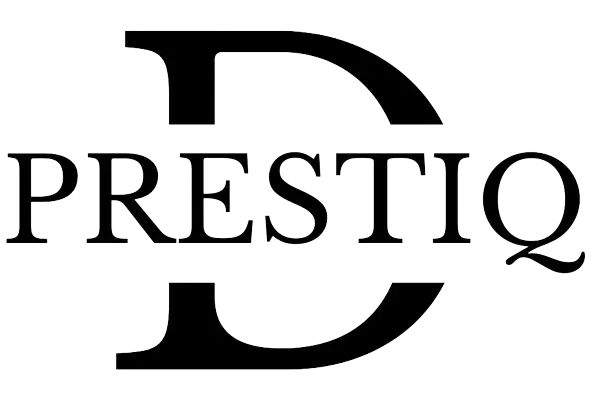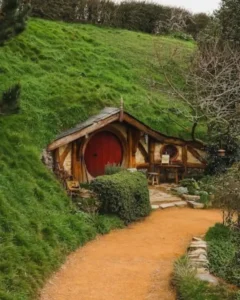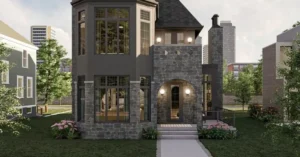If you are here only for the plans you can get there directly here!
About Underground House Plans
Pros:
Energy efficiency due to natural insulation
Protection from extreme weather
Quiet living environment
Low maintenance exterior
Unique aesthetic and privacy
Cons:
Risk of water infiltration and dampness
Limited natural light and potential for poor ventilation
More challenging construction and emergency egress
Potential for radon gas accumulation
Higher initial building costs
Design Principles
When designing an underground house, there are several design principles to consider. These principles are essential to ensure that the house is functional, comfortable, and energy-efficient.
Integration with Environment

One of the primary design principles for underground house plans is the integration with the environment. The house should blend seamlessly with the surrounding landscape to create a natural and harmonious environment. This means that the house should be designed to take advantage of the natural features of the site, such as the slope of the land, the orientation of the sun, and the prevailing winds.
Lighting and Ventilation
Another critical design principle for underground house plans is lighting and ventilation. Since underground houses are naturally dark and damp, it is essential to provide adequate lighting and ventilation to ensure that the house is comfortable and healthy to live in. This can be achieved through the use of skylights, windows, and ventilation systems.
Insulation and Energy Efficiency
Finally, insulation and energy efficiency are crucial design principles for underground house plans. Since underground houses are naturally insulated by the earth, they can be highly energy-efficient. However, it is essential to ensure that the house is properly insulated to prevent heat loss and to maintain a comfortable temperature. This can be achieved through the use of high-quality insulation materials and energy-efficient heating and cooling systems.
Excavation and Foundation

Site Selection
Before starting the excavation, it is important to choose the right site for an underground house. The site should be well-drained and not prone to flooding. The soil type should be stable and not prone to shifting or settling. The site should also have adequate sunlight and ventilation. The orientation of the house should be such that it gets maximum sunlight during the winter months.
Excavation Techniques
Excavation is the process of digging a large hole to create space for the underground house. There are several excavation techniques that can be used, including traditional digging, tunneling, and blasting. The choice of technique will depend on the soil type, the size of the house, and the equipment available.
Traditional digging involves using a backhoe or excavator to remove the soil. Tunneling involves digging a tunnel and then excavating the space for the house. Blasting involves using explosives to remove the soil.
Foundation Types
Once the excavation is complete, the foundation needs to be constructed. There are several types of foundations that can be used for an underground house.
A concrete foundation is the most common type of foundation for underground houses. It provides a stable base for the house and helps to prevent moisture from seeping into the house.
Another type of foundation that can be used is a rubble trench foundation. This type of foundation involves digging a trench and filling it with rubble or gravel. The foundation is then covered with a layer of soil.
A third type of foundation that can be used is a piling foundation. This type of foundation involves driving piles into the ground and then building the house on top of the piles.
Overall, the excavation and foundation are critical steps in the construction of an underground house. Proper site selection, excavation techniques, and foundation type are essential for the stability and longevity of the house.
Structural Considerations

When planning an underground house, structural considerations are of utmost importance. The structural integrity of the house depends on the strength and stability of the load-bearing walls, roof and ceiling structures, as well as the waterproofing and drainage system.
Load-Bearing Walls
The load-bearing walls of an underground house are responsible for supporting the weight of the soil above the house. They must be strong enough to resist the lateral pressure of the soil and prevent the house from collapsing. Reinforced concrete walls are the most commonly used material for load-bearing walls in underground houses. They are strong, durable, and can withstand the pressure of the soil.
Roof and Ceiling Structures
The roof and ceiling structures of an underground house must be designed to withstand the weight of the soil above the house. The roof and ceiling structures are usually made of reinforced concrete or steel. Reinforced concrete is the most commonly used material for roof and ceiling structures in underground houses. It is strong, durable, and can withstand the weight of the soil.
Waterproofing and Drainage
Waterproofing and drainage are critical components of an underground house. The waterproofing system must be designed to prevent water from seeping into the house and causing damage. The drainage system must be designed to remove water from around the house and prevent it from accumulating around the foundation. A combination of waterproofing membranes, drainage pipes, and sump pumps is commonly used to prevent water from entering the house and remove water from around the foundation.
Materials and Construction Methods

Sustainable Materials
When it comes to building an underground house, using sustainable materials is not only eco-friendly but also cost-effective. Materials like reclaimed wood, bamboo, recycled steel, and insulated concrete forms (ICFs) are great options for building the structure of the house. These materials are durable, energy-efficient, and have a lower carbon footprint compared to traditional building materials.
ICFs are particularly suitable for underground homes as they provide excellent insulation and can withstand the pressure of the surrounding soil. They are also easy to work with and can be molded into any shape or size. Bamboo is another sustainable material that is lightweight, strong, and has a high tensile strength, making it ideal for use in the roof and walls of an underground house.
Construction Techniques
The construction of an underground house requires specialized techniques and equipment. One popular method is the cut-and-cover technique, where a large trench is dug and the house is built inside it. The trench is then covered with soil, creating a mound that blends with the surrounding landscape.
Another method is the earth berm technique, where the house is built partially underground and the remaining walls are covered with soil. This technique provides natural insulation, reduces energy costs, and creates a seamless transition between the house and the surrounding environment.
Interior Design and Layout

Room Arrangement
When it comes to designing an underground house, the layout of the rooms is of utmost importance. Since the house is partially or entirely built into the earth, the natural light that enters the house is limited. Therefore, it is essential to arrange the rooms in a way that maximizes natural light. The living room, kitchen, and dining area should be placed in areas where there is ample sunlight. Rooms that do not require natural light, such as the laundry room or storage room, can be placed in areas with limited exposure to sunlight.
Another important factor to consider is the flow of the house. The layout should be designed in a way that allows for easy movement from one room to another. The placement of doors and windows should be carefully considered to ensure that there is no congestion in the house.
Furniture and Storage Solutions
Designing an underground house requires a lot of creativity, especially when it comes to furniture and storage solutions. Since the space is limited, it is essential to use furniture that is space-efficient. Multi-functional furniture pieces such as sofa beds, storage ottomans, and folding chairs can be used to save space.
Storage solutions are also crucial in an underground house. Built-in storage is an excellent way to maximize space. Cabinets can be built into the walls to save floor space. Vertical storage is also an excellent option. Shelves can be installed on the walls to store books, decorations, and other items.
300+ bought in past month
✅ 18 Months Warranty
✅ Pneumatic lifting mechanism
✅ Easy & Fast Setup
❌ No soft close
Underground House Plans








If you prefer to get inspiration from a video, I recommend this one:
What is the point of underground houses?
The point of underground houses is to provide energy efficiency, protection from extreme weather, and integration with the natural landscape, resulting in lower heating and cooling costs.
What are the disadvantages of a underground house?
Disadvantages of underground houses include potential for water leakage, limited natural light, challenging inspections and repairs, higher humidity, and possible insect issues.
Are underground structures safe?
Underground structures are generally safe from earthquakes, as they move with the ground, but safety can depend on construction quality and location.
If you liked this blog article about the topic “Underground House Plans”, don’t forget to leave us a comment down below to tell us about your experience.
Not enough inspiration yet?
Feel free to also check out our other Articles from the category “Tiny House“ and don’t forget to follow us on Pinterest.



